

— Products —
 Consumer hotline +8618073152920
Consumer hotline +8618073152920 WhatsApp:+8615367865107
Address:Room 102, District D, Houhu Industrial Park, Yuelu District, Changsha City, Hunan Province, China
All products
Precipitation sensor has an important role and value in the application of meteorology, hydrology, environmental monitoring and other fields, which can provide key precipitation data to support the decision-making and research work in weather forecasting, water resource management, disaster warning and agricultural production. Tipping Bucket Rain Gauge (TBRG) is a commonly used Precipitation sensor which works on the principle of tilted funnel.
Tel/WhatsApp:+8615367865107
Email:Arvin@niubol.com +Nearly 100 partner company in more than 68 countries. We are committed to providing high-quality, practical products to meet your needs and help you solve problems.Product Details
A precipitation sensor, also known as a rain gauge or precipitation monitor, is a device designed to measure the amount of precipitation, including rain, snow, hail, and any other form of precipitation. These sensors play an important role in the fields of meteorology, hydrology, and agriculture, helping users such as scientists, engineers, and farmers understand and predict weather conditions, water management, and irrigation needs.
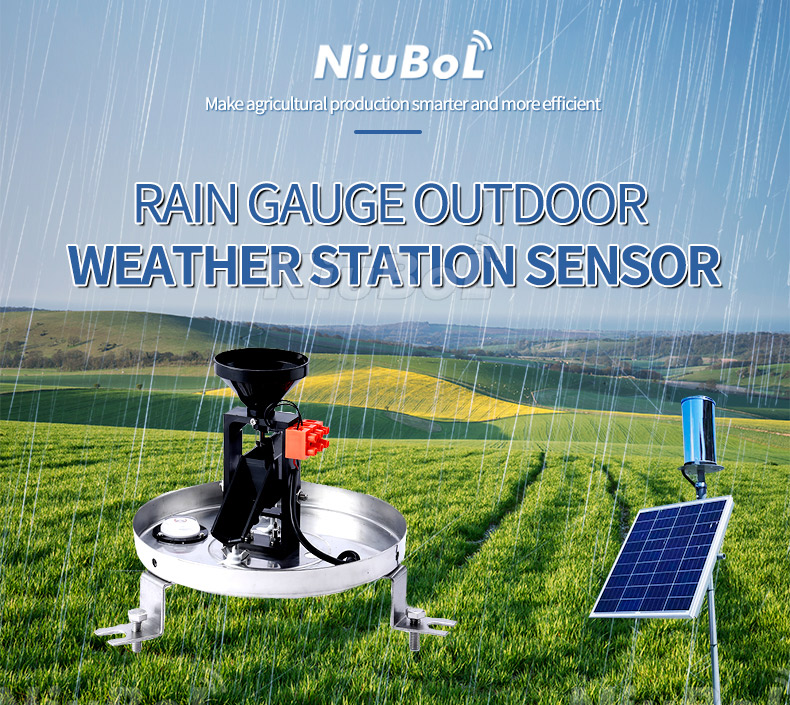
Precipitation sensors come in a variety of designs, but the basic principle usually involves the direct collection and quantification of precipitation. One common type is based on the tipping bucket mechanism, which consists of two small containers that, when a certain amount of precipitation is collected in one container, it tilts, pours the water into the other container, and sends an electronic signal that records a precipitation event and amount. Another type of sensor is optical or acoustic, which count precipitation by detecting changes in the scattering of light by precipitation particles or the propagation of sound waves.
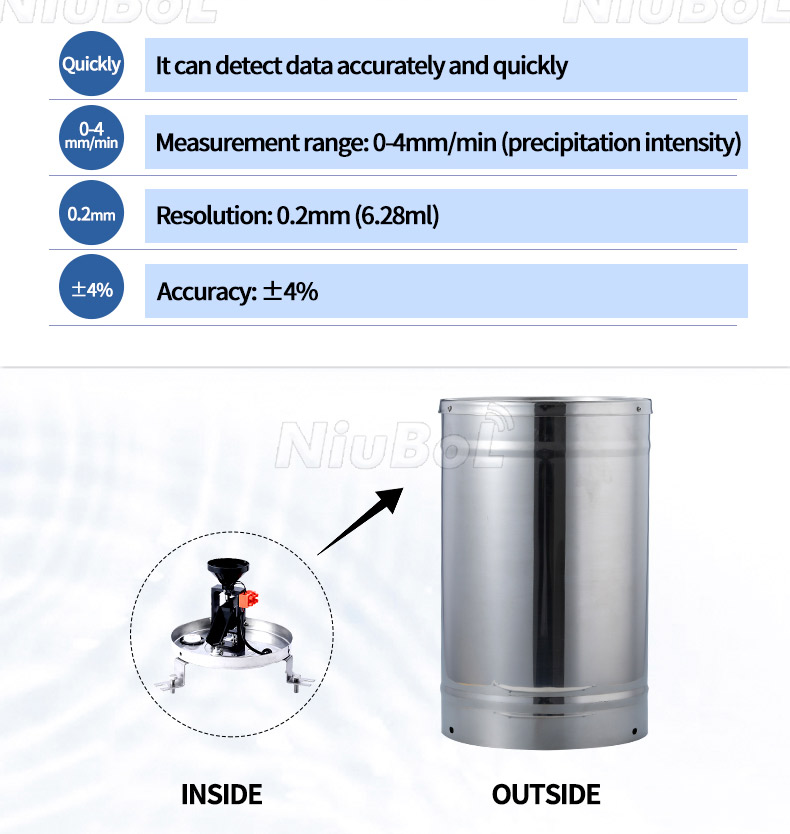


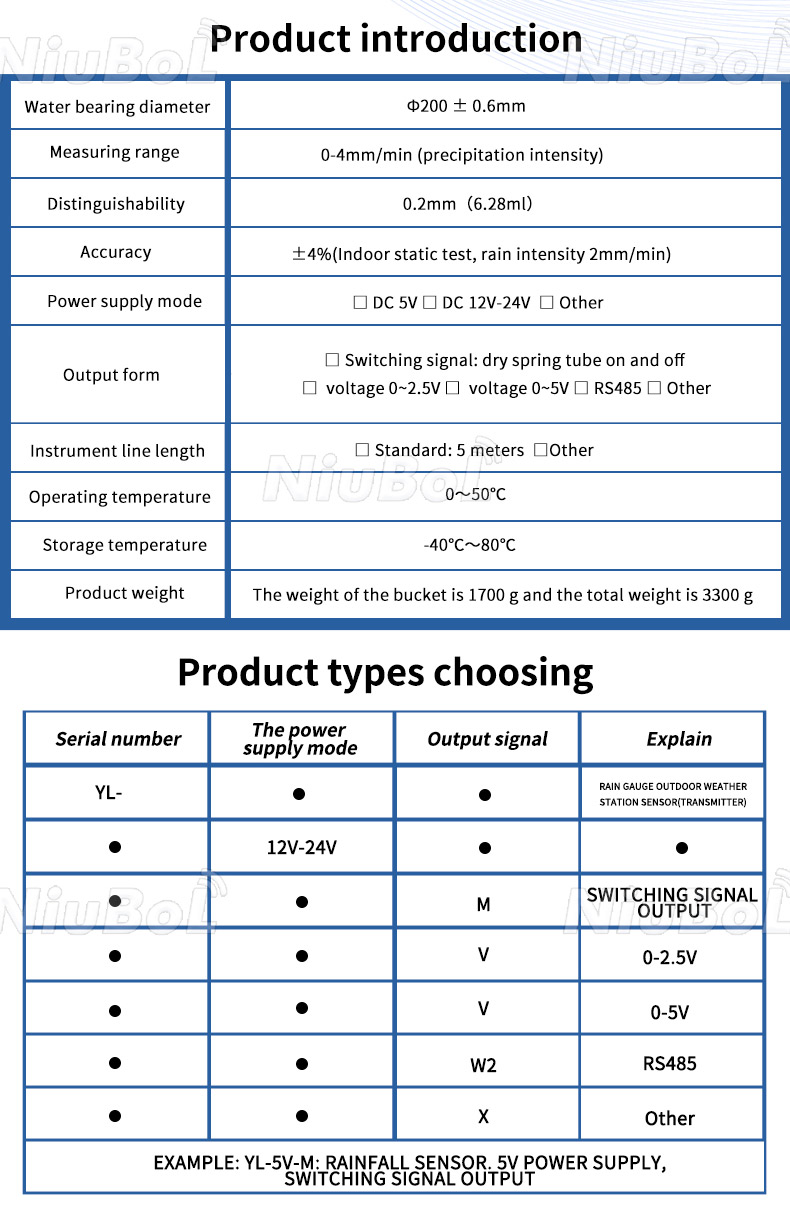
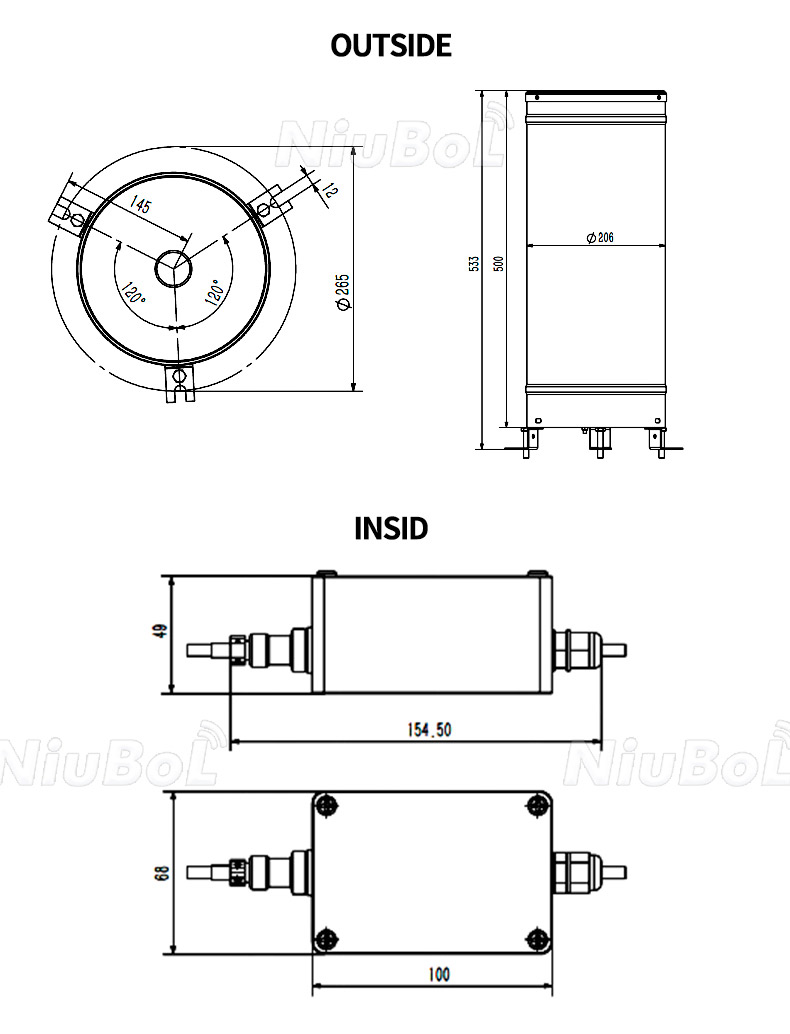
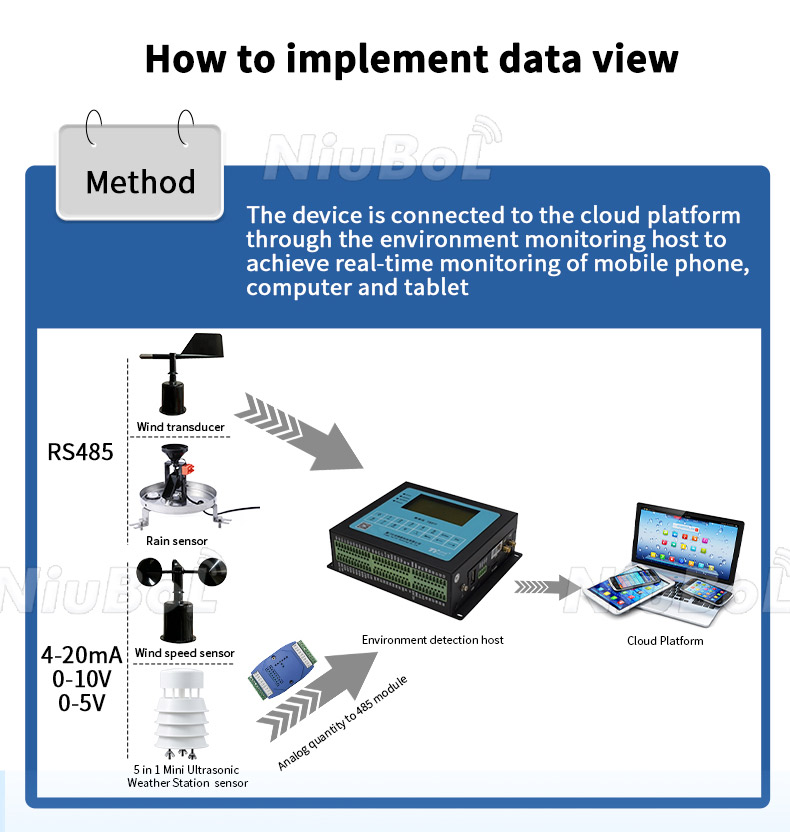

Tipping Bucket Rain Gauge (TBRG) is a commonly used Precipitation sensor which works on the principle of tilted funnel.
The Tipping Bucket Rain Gauge consists of a funnel and two counters. The funnel is mounted on a bracket with a small hole at the bottom of the funnel, when precipitation enters the funnel, it will accumulate at the bottom of the funnel.
When the amount of precipitation in the funnel reaches a certain amount, gravity will cause the funnel to tilt, causing the water to pour into a bucket of a specific capacity. At the same time, another bucket replaces the original position to become the bucket that receives the precipitation.
The process of inverting the bucket triggers a switch that adds 1 to a counter to record a precipitation event. In this way, every time a certain amount of precipitation accumulates in the funnel, a bucket inversion is triggered and the counters are accumulated.
By counting the number of times the counter is accrued, data on the amount of precipitation can be obtained. Typically, tipping bucket sensors are set to hold a fixed amount of precipitation per inversion, usually 0.2 mm or 0.5 mm, and can be adjusted as needed.
The advantages of tipping bucket sensors are their simple structure, high measurement accuracy, reliability, and good response to both rain and snow. Therefore, it is widely used in meteorology, hydrology, environmental monitoring and other fields, and has become a common precipitation measurement device.
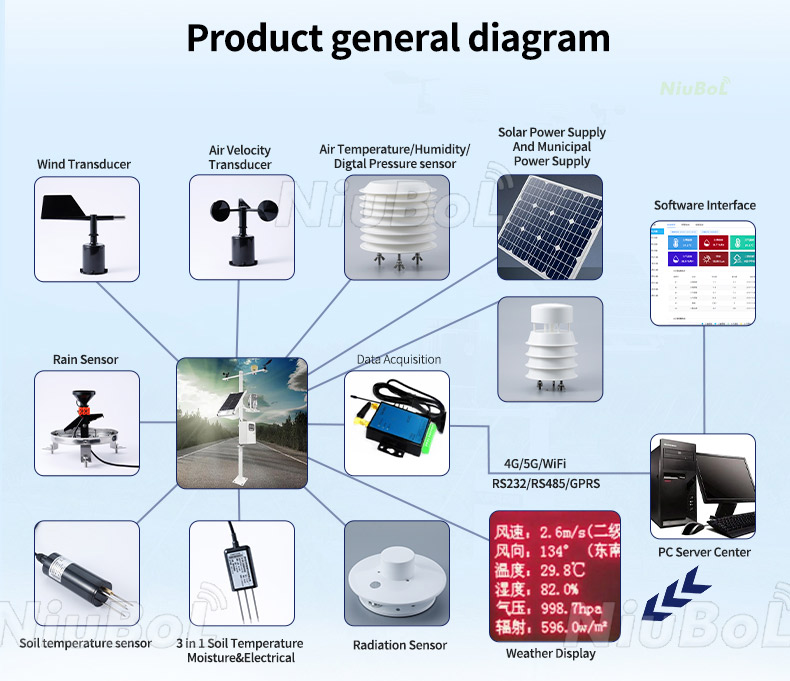
Precipitation sensor has a wide range of application scenarios and important roles in the fields of meteorology, hydrology and environmental monitoring, and its value is mainly expressed in the following aspects:
1. Meteorological forecasting and climate research: Precipitation sensor can measure precipitation and rainfall intensity in real time, providing important data support for meteorological forecasting and climate research. By monitoring and analyzing precipitation, it can help predict weather changes, formulate coping strategies, and conduct in-depth research on the patterns and trends of climate change.
2. Water resources management: Precipitation is an important part of water resources, Precipitation sensor can provide accurate precipitation data to help water resources management department for hydrological monitoring and water resources planning. Through the real-time monitoring of precipitation, it can assess the recharge of water resources, hydrological cycle process, and provide scientific basis for rational use and protection of water resources.
3. Early warning of natural disasters: Floods, droughts, flash floods and other natural disasters are closely related to precipitation, Precipitation sensor can monitor precipitation in real time to help realize disaster early warning and risk management. Through timely access to precipitation data, it can warn and respond to potential natural disasters and reduce casualties and property losses.
4. Agricultural and ecological environment monitoring: Crops' demand for precipitation and the appropriate amount of precipitation is one of the important factors for agricultural production.Precipitation sensor can provide monitoring data of precipitation situation in farmland, which can help farmers in irrigation scheduling and agricultural production management. Meanwhile, it can also be used for ecological environment monitoring to understand the impact of precipitation on the ecosystem and provide scientific reference for ecological protection and restoration.
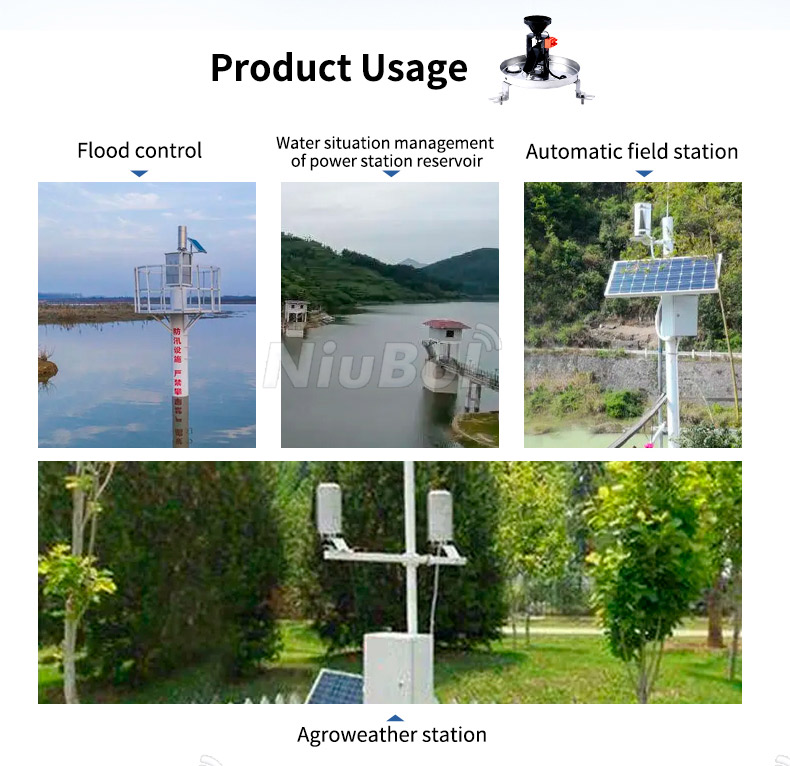
Tipping Bucket Rain Gauge is a commonly used Precipitation sensor, which generally needs to meet the following installation requirements and precautions:
1. Installation location: Tipping Bucket Rain Gauge should be installed on a flat, unobstructed, non-influential precipitation ground, away from buildings, trees and other high objects. At the same time to ensure that the installation location can facilitate maintenance and daily operation.
2. Installation Height: The installation height of the tipping bucket sensor should be greater than the height of the surrounding ground, generally recommended not less than 0.75 meters. This can prevent the impact of ground water flow on the measurement results, but also to reduce the attached to the funnel debris and dirt.
3. Calibration and maintenance: The tipping bucket sensor needs to be calibrated before use to ensure measurement accuracy. Calibration is generally done by comparing the data recorded by the standard precipitation meter and the tipping bucket sensor. At the same time, the tipping bucket sensor is regularly inspected and maintained, and the funnel and bucket are cleaned to ensure proper operation and accurate measurements.
4. Grounding Protection: The Tipping Bucket Sensor must be grounded and protected against the effects of bad weather such as lightning strikes on the equipment. It is recommended to use good grounding equipment and grounding wire to ensure that the grounding resistance is less than 10 ohms.
5. data transmission: bucket sensor generally need to be used with the data acquisition system, the measurement data will be transmitted to the data center or monitoring platform. It is recommended to choose a reliable data transmission method to ensure timely and accurate data transmission.
Installation requirements and precautions for tipping bucket precipitation sensor include installation location, installation height, calibration and maintenance, grounding protection and data transmission. Good installation and maintenance can ensure the normal operation and accurate measurement of the tipping bucket sensor, providing reliable data support for meteorology, hydrology, environmental monitoring and other fields.
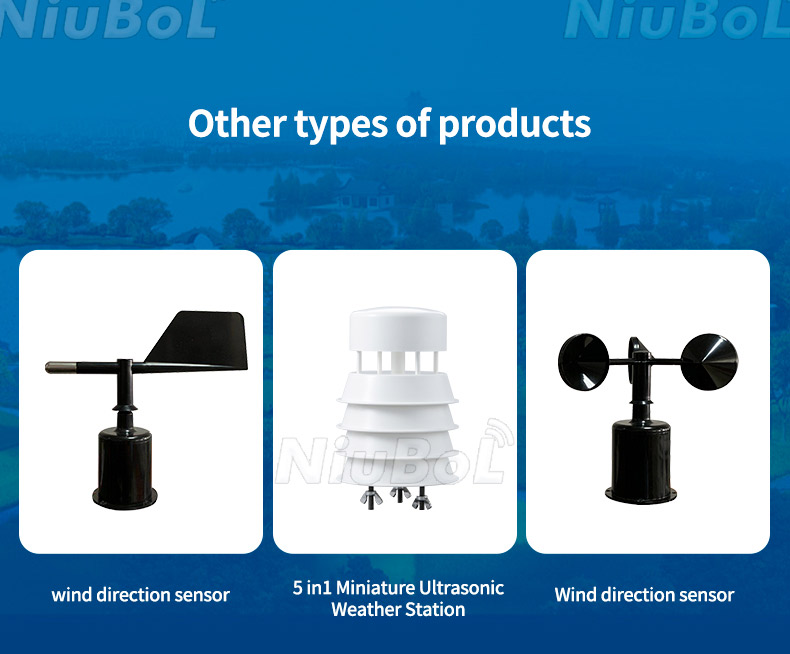
To summarize, the application of Precipitation sensor in meteorology, hydrology, environmental monitoring and other fields has an important role and value, which can provide key precipitation data to support the decision-making and research work in weather forecasting, water resource management, disaster early warning and agricultural production.
NBL-W-RS-Tipping-bucket-rain-gauge-instruction-manual-0.5mm.pdf
Prev:Soil ph sensor
Sensors & Weather Stations Catalog
Agriculture Sensors and Weather Stations Catalog-NiuBoL.pdf
Weather Stations Catalog-NiuBoL.pdf
Related recommendations
 Multi-Depth Soil Sensor RS485
Multi-Depth Soil Sensor RS485 TDR Soil Moisture Sensor
TDR Soil Moisture Sensor Pyranometer Solar Radiation Sensors
Pyranometer Solar Radiation Sensors Soil ph sensor
Soil ph sensor Tipping Bucket Rain Gauge
Tipping Bucket Rain Gauge Air Temperature and Humidity Sensor
Air Temperature and Humidity Sensor
Screenshot, WhatsApp to identify the QR code
WhatsApp number:+8615367865107
(Click on WhatsApp to copy and add friends)